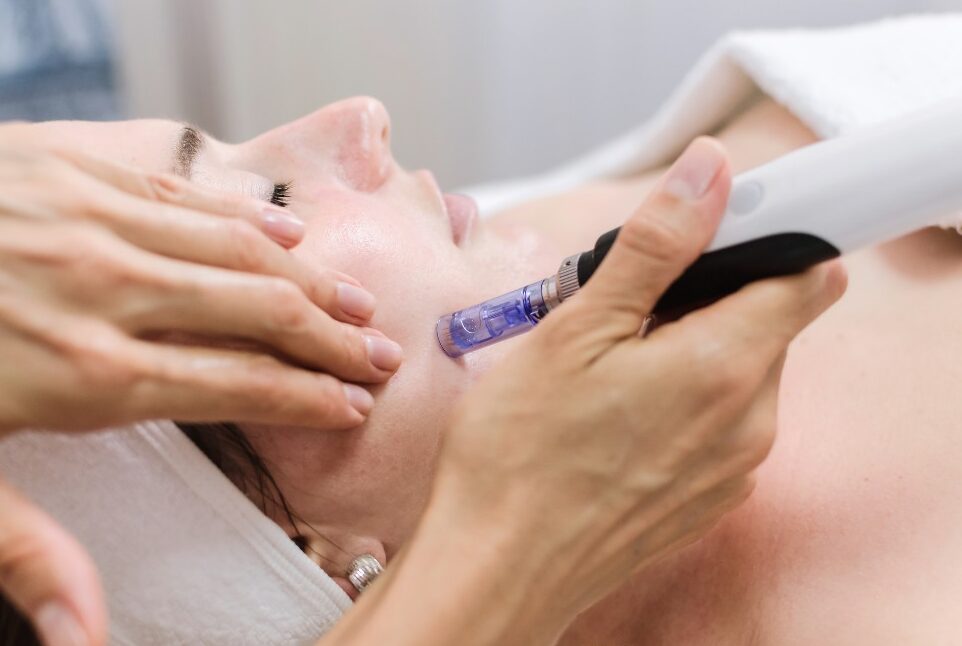In today’s wellness economy, transparency matters as much as touch. Whether your clinic specializes in cosmetic injectables, laser treatments, body sculpting, or acupuncture, one thing remains constant: clients want to understand what they’re paying for, and why.
For many clinic owners, the idea of adding a credit card surcharge feels risky. The concern is understandable, you don’t want to disrupt the trust you’ve built, alienate loyal patients, or seem like you’re “nickel-and-diming” people who come to you for care. But as margins tighten and operational costs climb, more wellness businesses are asking an important question: How do we stay financially sustainable without raising service prices across the board?
Surcharge programs, when implemented thoughtfully, are proving to be part of the answer. Here’s what clinic owners need to know about adding a surcharge, from real patient reactions to rollout strategies that preserve trust, professionalism, and profitability.
Why the Wellness Sector Is Uniquely Suited for Surcharging
Wellness and aesthetic services occupy a unique space in the service economy. Unlike essential medical care, they’re often elective, high-value, and relationship-driven. And while there are plenty of exceptions (Botox for migraines, hormone balancing for medical necessity), the reality is that many treatments offered in clinics and medspas are non-essential purchases made by clients who are able and willing to invest in their well-being.
This makes the wellness sector particularly well-positioned to embrace transparent pricing,including the practice of passing on credit card processing fees.
When you’re offering premium services to clients who prioritize self-care, personalization, and results, a clearly disclosed surcharge is unlikely to deter them. In fact, research and anecdotal evidence show that many clients prefer knowing exactly where their money is going.
Here’s how to approach that conversation in a way that respects both your business and your clients.
What Patients Actually Think About Credit Card Surcharges
While some patients may initially pause at the idea of a surcharge, the way it’s introduced makes all the difference. Practices that communicate clearly and confidently from the outset tend to see the highest levels of acceptance.
A surcharge that’s well-explained, ideally at the time of booking or intake, is rarely a dealbreaker. Patients already encounter similar fees across their daily lives: from airline bookings and rideshare apps to online ticketing and delivery services. A 2.4% fee on a $300 service adds $7.20, an amount many patients accept when it’s explained clearly and doesn’t come across as a hidden or arbitrary charge.
“I can’t say I was phased. I’ve been coming here for years and wouldn’t go anywhere else for my injections. I usually book follow-ups in person, and the front desk mentioned they’d be adding the fee. I don’t love it, but I appreciated the heads-up, and when I asked why, she said it was to avoid raising prices. So, works for me.”
It’s not just the presence of a fee that matters, it’s how it’s presented.
Patients tend to push back when:
- The fee feels hidden or appears only at checkout
- Staff seem unsure or uncomfortable explaining it
- There’s no visible signage or written disclosure
But patients are more accepting when:
- The surcharge is disclosed early in the booking process
- The team presents it with clarity and confidence
- It’s framed as a measure to support business sustainability, not a penalty
When handled thoughtfully, surcharge programs can feel like a fair and transparent part of doing business, not an unpleasant surprise.
Sample Language You Can Use with Clients
You don’t need to over-explain or justify. Keep it simple, clear, and confident:
“To maintain fair and consistent pricing across all of our services, we apply a small surcharge on credit card payments. Debit, cash, and e-transfer are always available as fee-free options.”
Or:
“Like many small businesses, we’ve introduced a card processing fee to help offset rising operational costs. This allows us to keep our service pricing steady without cutting corners on care.”
You can include this message:
- In your booking confirmation emails
- On your intake forms or service menus
- As part of verbal scripting at the front desk
- At the bottom of invoices and receipts
- On a countertop or waiting room sign
Smart Framing Matters: Trust Your Clients to Understand
Today’s clients are not naive. They understand that running a business involves overhead, and that high-touch care involves labor, licensing, and operational systems. When your average client is spending $200 to $600 per visit, they also know that a $6-18 fee isn’t what makes or breaks the experience.
In fact, transparency often builds more trust, not less.
Many wellness clients value brands that are open about their pricing, policies, and process. By framing your surcharge policy around fairness and consistency, you’re showing that you respect your client enough to explain where their money is going, instead of quietly folding costs into inflated prices.
This is especially important in sectors like aesthetics and integrative wellness, where clients already perceive the services as premium or boutique. The surcharge doesn’t contradict that image, it complements it. It signals professionalism, accountability, and confidence in the value you provide.
Why It Matters Financially
Surcharging can recover tens of thousands of dollars per year in card processing fees, especially for clinics that accept a high volume of credit card payments. These fees, which can range from 1.4% to 3% per transaction, may not seem significant on their own, but add up fast:
- $300 per client x 20 clients/week = $6,000
- 2.6% card fee on that amount = $156/week
- Annual loss to card fees = $8,112
That’s money you could be reinvesting into equipment, staff training, marketing, or even client amenities. A surcharge program allows you to recapture those costs without raising service prices across the board.
How to Roll Out a Surcharge Smoothly in Your Clinic
1. Train Your Team
Your front desk and booking staff should be confident explaining the surcharge, without hesitation or apology. Practice the language together so they can speak clearly and calmly when the topic comes up.
2. Use Clean, Visible Signage
Display your surcharge notice at the point of payment, within your intake forms, and anywhere patients engage with your policies. Clear signage reduces confusion and helps set expectations early.
3. Update Your Digital Touchpoints
Ensure the surcharge is mentioned across your key online and email communications, including:
- Booking confirmations
- Payment or cancellation policy pages
- FAQ sections
- Digital receipts
4. Offer Alternatives
Transparency goes hand in hand with choice. Let patients know they can avoid the surcharge by paying with debit, cash, or e-transfer. Most appreciate having the option.
5. Use the Right Technology
Choose a processor that handles the heavy lifting. Rescue Payments automatically calculates and applies the fee, provides ready-to-use signage, and integrates seamlessly with your smart terminal or virtual payment tools.
From signage and scripts to back-end automation, Rescue makes your surcharge rollout smooth, compliant, and stress-free.
What About Negative Reactions?
A small percentage of clients may initially be surprised by the fee, especially if it wasn’t clearly disclosed ahead of time. This is why consistency and visibility are key.
If someone pushes back, a calm, non-defensive approach works best:
“We totally understand. We introduced the fee recently to help manage rising processing costs, but we always offer debit or e-transfer as fee-free options.”
Most clients simply want to feel informed, not caught off guard.
One clinic shared that a regular patient raised an eyebrow at checkout when she noticed the added fee. The receptionist explained the policy clearly, mentioning that it helps the clinic avoid raising prices across the board. The patient reaction: “Makes sense, everything’s going up these days,” and proceeded to rebook her next session.
What could’ve been a tense moment turned into a non-issue, because the team was confident, prepared, and respectful in how they handled it.
A Transparent Future for Transparent Care
As the wellness space continues to grow, so do client expectations around quality, consistency, and clarity. Introducing a surcharge isn’t about squeezing more out of your clients, it’s about being honest and intentional.
It’s a statement that says: We believe in the value of what we offer. We’re proud of the experience we deliver. And we’re committed to building a sustainable business that can serve our clients well into the future.
If your clinic or medspa is looking to implement a surcharge model with professionalism and compliance, Rescue Payments can help. From customized signage and clear patient language to automated terminals and seamless tech integration, we support your rollout every step of the way.
Book a call to explore how a well-executed surcharge program can protect your margins, while reinforcing trust and transparency with your clients.

